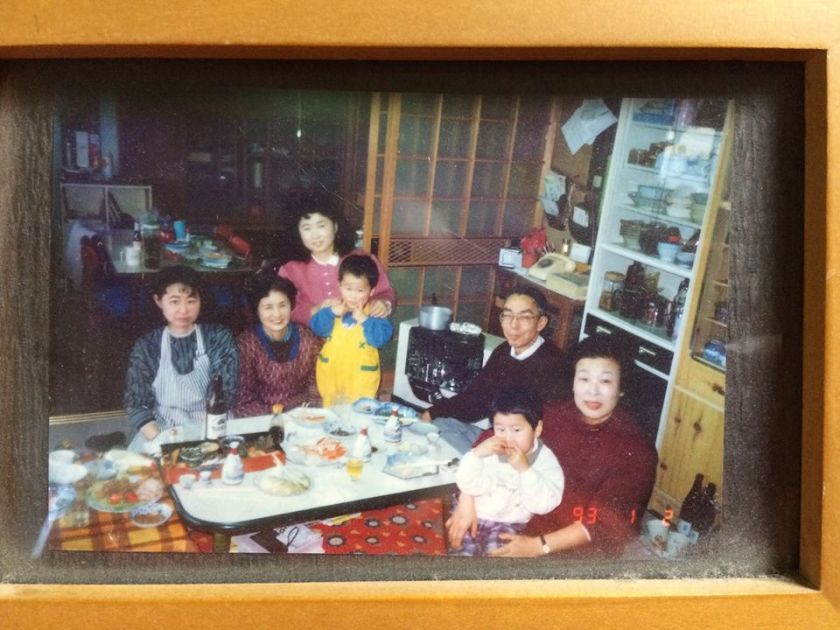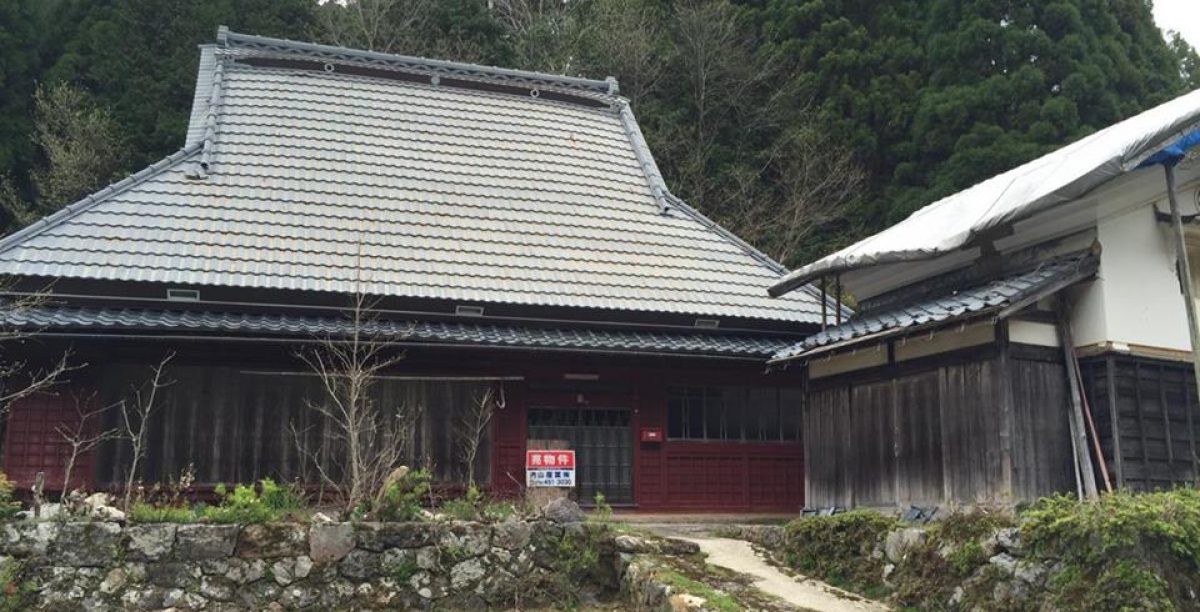You’re going to like this story even though I’m fibbing a bit, as it actually occurred several months back:
Mrs. Fujimura, a dear friend of ours and very supportive of our minka plans, informed us one day that Sachiko-san, the daughter of one of her closest friends, was in town. Sachiko-san’s mother passed away two years ago and her father before that, so now the daughter, she having resided in Glendale, Calfornia for many years, was in Kyoto to finalize the sale of the family home she grew up in.
This included disposing of virtually everything in the house. Fujimura-san, learning this, informed Sachiko-san about our minka and together they proposed a little deal: for 20,000 yen (about $190) we could come and take anything we might want to furnish our minka. Figuring that, sure, we could probably get a rice cooker, a washing machine, and maybe a used refrigerator out the deal, agreed.
Soon after, Fujimura-san and I were driving to the Yoshimura home. “I’m really embarrassed to have to tell you this,” she began, “But Sachiko-san already promised the rice cooker and the TV to a friend of hers.”
“That’s okay,” I said. “We’re not planning on having a TV at the house anyway, and we’ll just get a rice cooker from somewhere else.”
“Alright,” she continued. “But when you get there, really – really be sure to take anything you might possibly want. Don’t hesitate!”
“Sure, okay. Thanks!”
It turned out that the Yoshimura family lived in what had been a traditional Japanese machiya. It had been modernized somewhat through the years, but it was still quite a place.
And there were treasures in every room.
I sheepishly began sticking Post-It notes on various pieces of furniture, pottery, kitchen appliances. “Really, Sachiko-san? Are you sure you feel okay about my taking all this stuff?”
“By all means,” she insisted. “The more you take the less I’ll have to pay to have them haul it away.”
Allow me to explain: As discussed in this earlier post, the Japanese are notoriously terrible about junking anything that isn’t fresh out of ten layers of plastic wrap. Perfectly good used automobiles, books, computers, furniture, and even antiques have a ridiculously tiny resale value compared with most other countries. Years ago I surprised Yukiyo with a huge, beautifully-crafted wardrobe (as in the piece of furniture) she didn’t care for. It sat mostly unused for several years until we called a recycle shop to come and take it away. Admiring its condition, the recycle shop appraiser made us an offer: “6000 yen,” he said.
“Gee,” said I, “That’s awfully low. How about 10,000 yen?”
“You misunderstand,” he replied. “6,000 yen to take it away.”
Another time I tried selling about 60 lbs. worth of books to a used bookstore. They had no parking, so I ended up spending about $15 at a metered lot many blocks away. After examining the books for at least 75 minutes, they offered me 30 yen (about 25 cents).
In Sachiko-san’s case, I imagined she would have been charged by the kilogram. Insane.
Over the next four days, I packed and readied an entire extra-large moving van’s worth of incredible stuff, all aesthetically a perfect match for the minka in the mountains:
- Four antique tansu (traditional Japanese dressers)
- a Butsudan (Buddhist altar)
- a Kamidana (Shinto Shrine)
- Samurai sword reproductions
- Futon (about 10 sets)
- Japanese dolls in glass cases (about 4)
- Hibachi (2 – one wooden box types and one round ceramic)
- Go table and pieces in wooden containers
- Miya shoji (room dividers, 2)
- Antique carpentry tools in wooden boxes (about 5 boxes)
- A bicycle
- A portable Picnic Bar Set
- A table made from cross section of 120-year-old tree trunk
- Box of 1930s 78rpm records
- Kama Pots for okudosan
- Kitchen utensils (pots and pans)
- Gardening tools
- a mochi-maker and mochi-pounding mallet
- Kakemono (hanging scrolls, about 20)
- A set of golf clubs
- Two World War II Japanese soldier helmets and canteens
- Fine china from Japan, China, Great Britain, America and France
- Kimono and kimono accessories
- Yukata (summer kimono)
- Refrigerator
- Washing machine
- Antique cameras
- Large antique wicker baskets
- Original pottery (about 20 pieces)
- Clay flowerpots (about 20)
- Hanafuda (traditional Japanese card game, 2 sets)
…and that’s what I can remember.
The one sad part of this tale is that in practically every room, in every drawer, Sachiko’s mother had stashed literally thousands of photos, including hundreds of Sachiko-san, and others seemingly of her ancestors dating back to the early Meiji Period. “Are you sure you don’t want to keep any of these?” I asked.
“No, I took the all the photos I wanted.”
While I was packing up, Sachiko-san and Fujimura-san dropped by to check my progress. “I hope you can take some comfort,” I began, “in the knowledge that many of your mother’s treasures won’t end up in a landfill somewhere.”
“And as far as I’m concerned, the minka in the mountains is really the combined spirits of three families: the Motohara Family, who built it 200 years ago; Yukiyo, Sadie, and I; and partly now the Yoshimura Family.” Once everything’s done, of course, I hope Sachiko-san can come and visit her old stuff.
I did decide to keep a few old family photos, the really old and interesting stuff, even though I had no idea who these people were, and in most cases where they were and what they were doing.

And I kept this one, of the Yoshimura Family, celebrating the New Year’s Holiday back in 1993. I’m looking forward to hanging it next to one of the Motohara Family, in the minka in the mountains.








